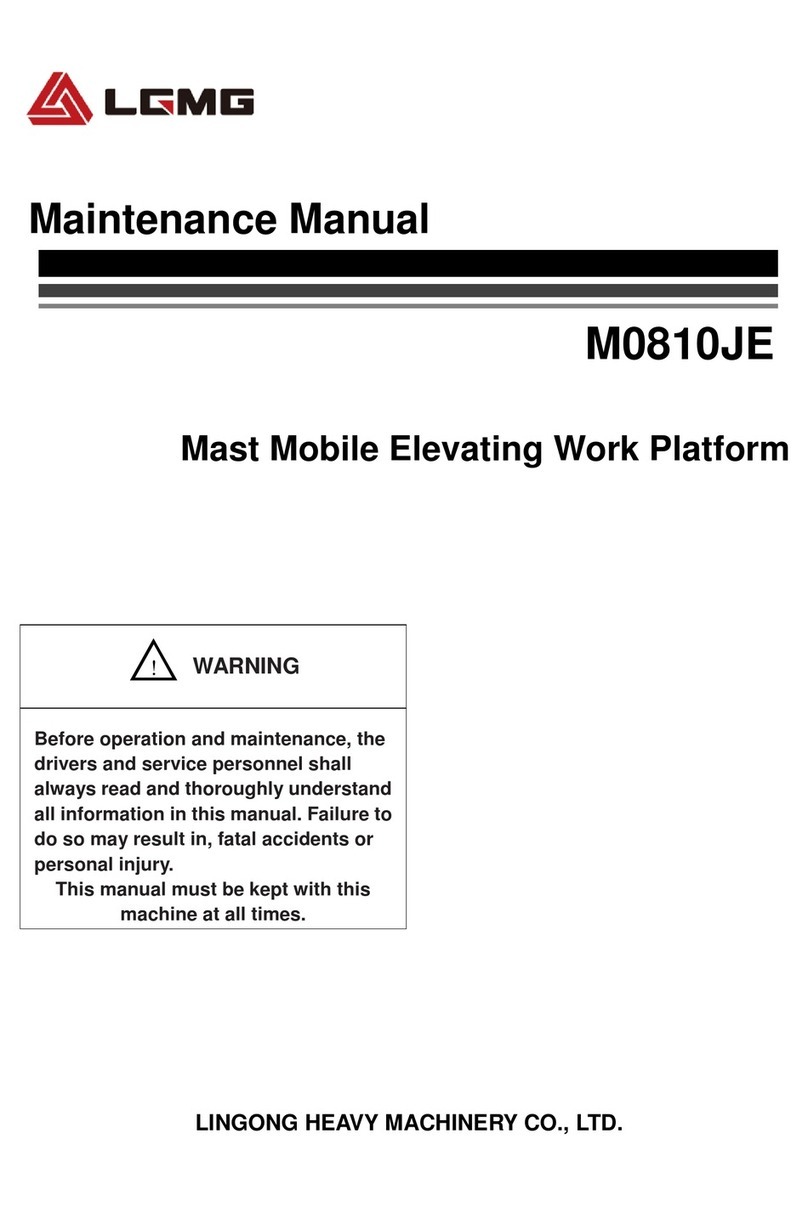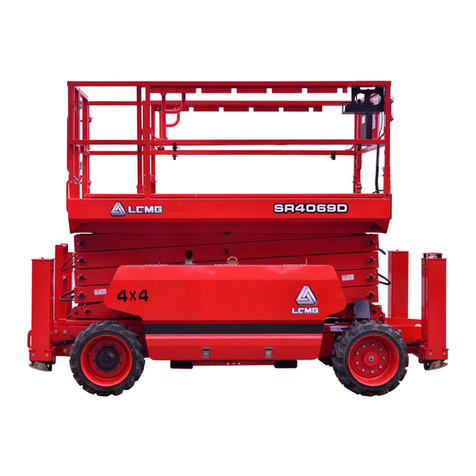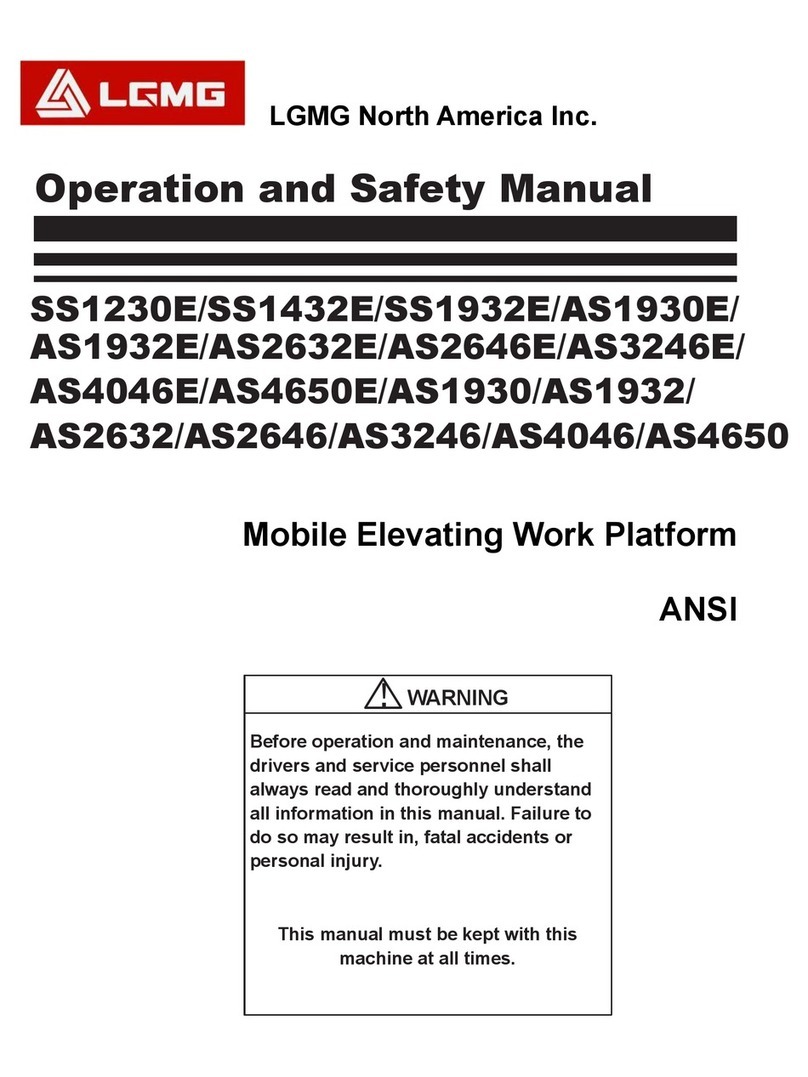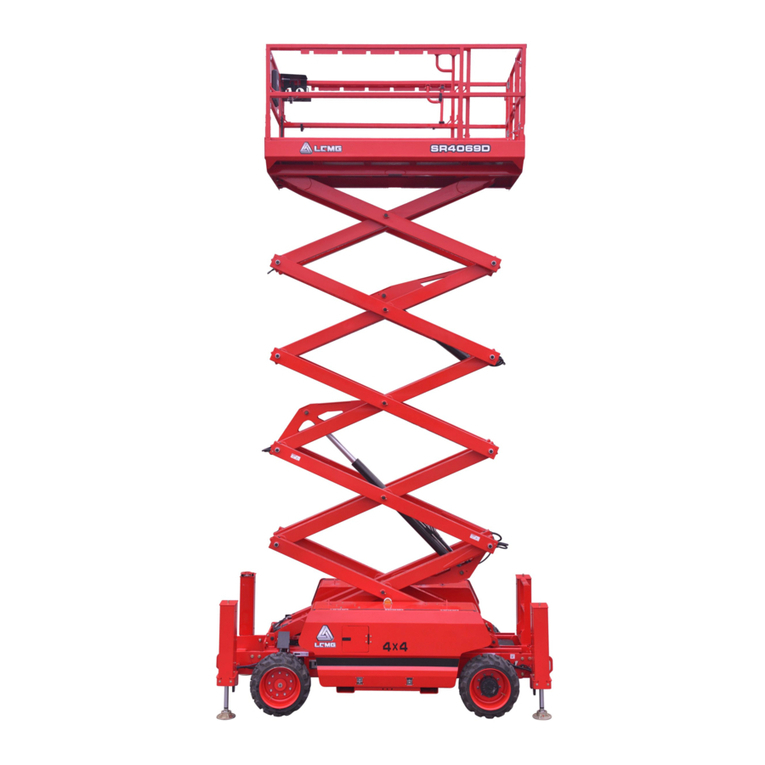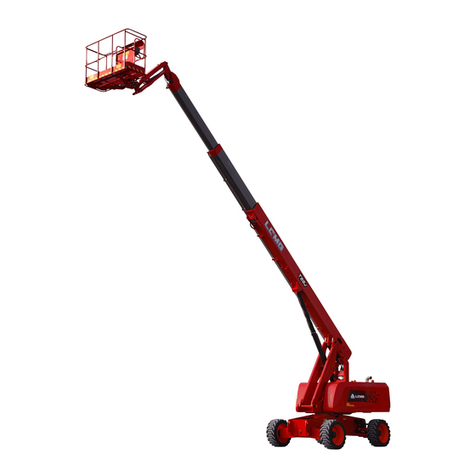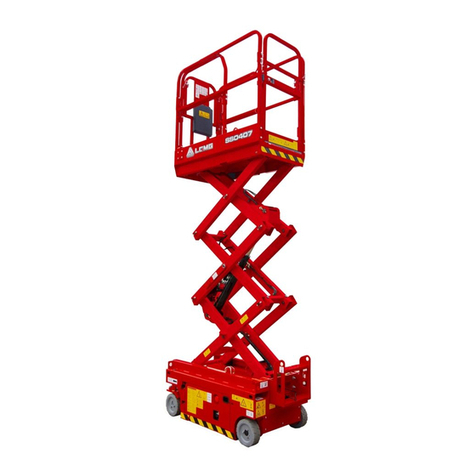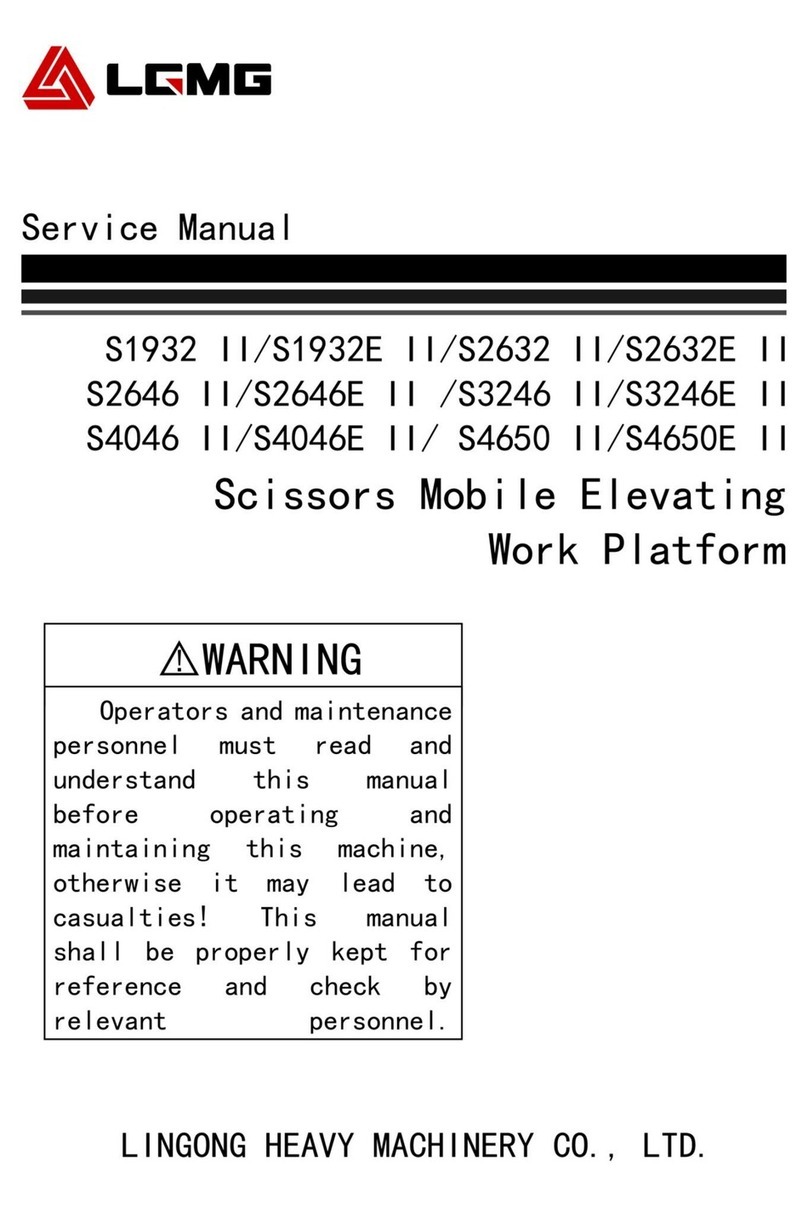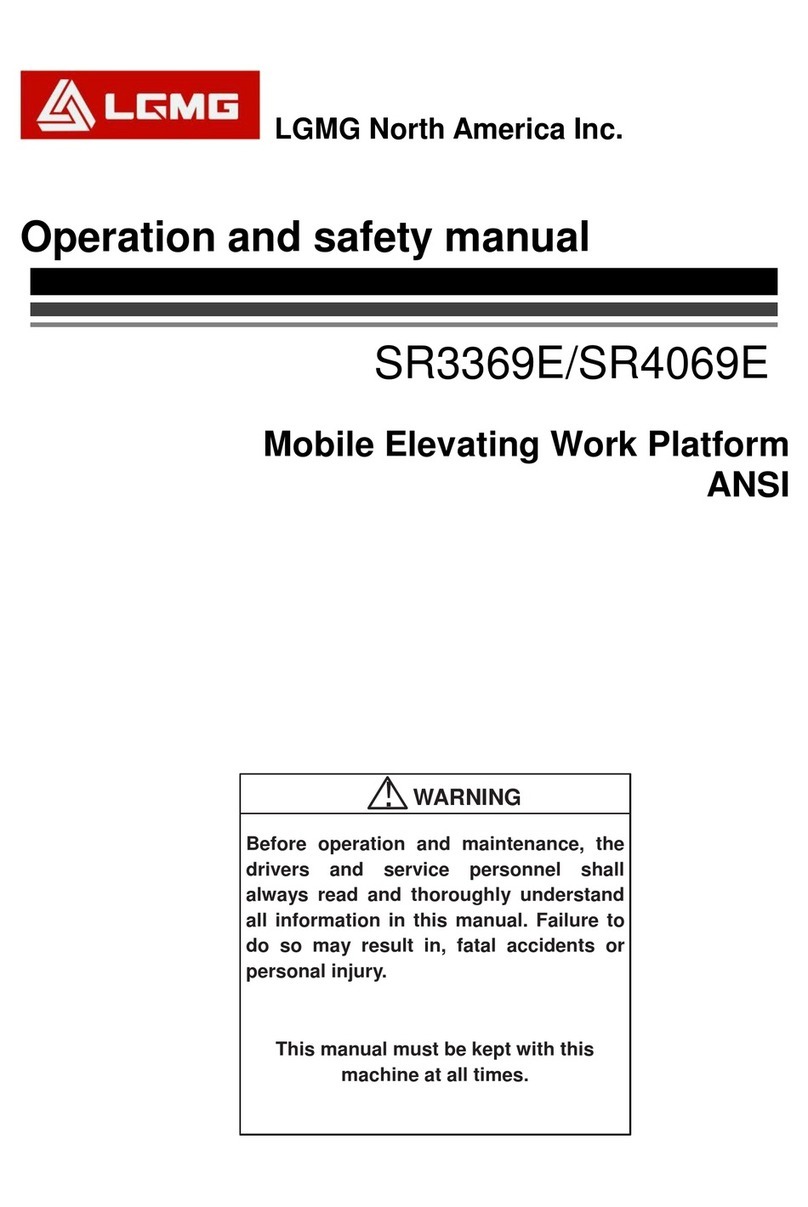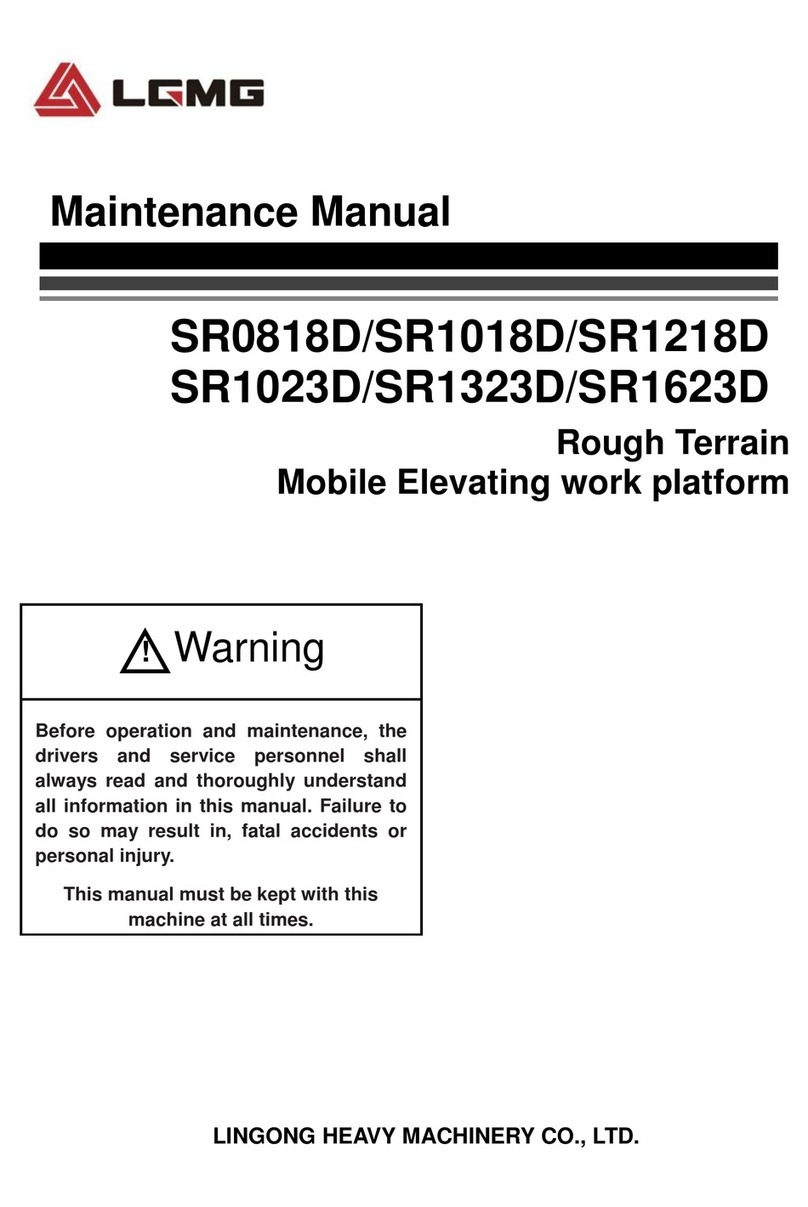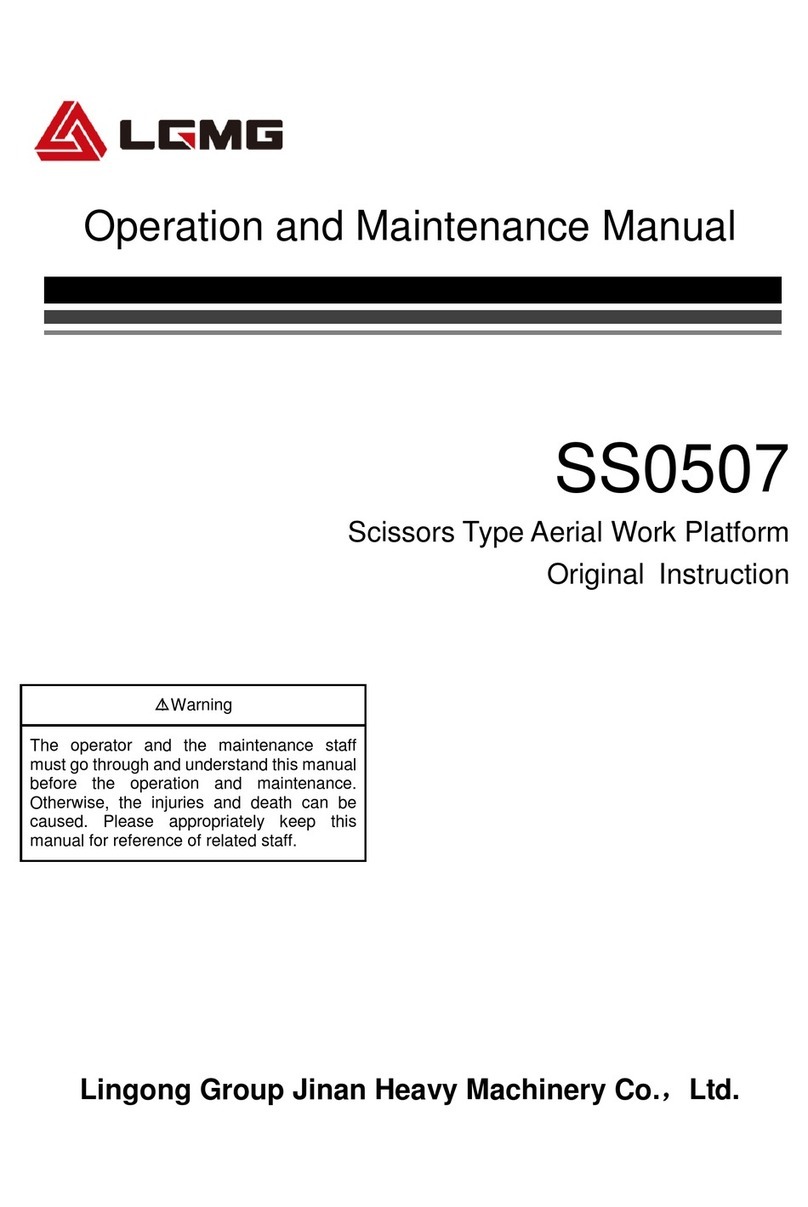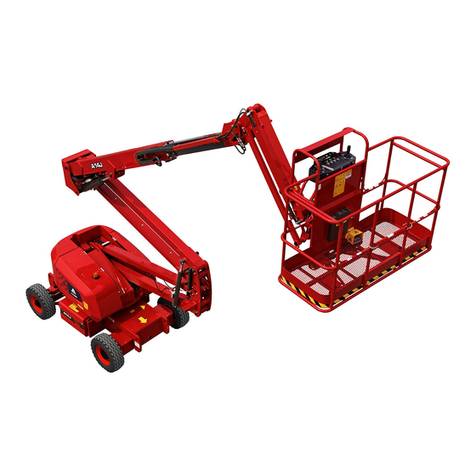
Elevating Work Platform Operation Manual
I
Contents
Contents......................................................................................................................I
Chapter 1 Safety...................................................................................................... 1
1.1Danger..............................................................................................................3
1.2 No Operation Except Following Cases..................................................... 3
1.3 Classification of Hazards............................................................................. 3
1.4 Intended purpose.......................................................................................... 3
1.5 Safety Sign Maintenance.............................................................................3
1.6 Risk of Electric Shock...................................................................................4
1.7 Safety of Work Area......................................................................................4
1.8 Crushing Hazards......................................................................................... 5
1.9Hazards When Operating on a Slope.........................................................5
1.10 Falling Hazards........................................................................................... 6
1.11 Crash Hazards.............................................................................................6
1.12 Hazard of Component Damage............................................................... 7
1.13 Hazard of Explosion and Fire................................................................... 7
1.14 Machine Damage Hazards........................................................................7
1.15 Personal Injury Hazards............................................................................ 7
1.16 Battery Safety.............................................................................................. 7
1.17 Tilting Hazard...............................................................................................8
Chapter 2 Machine Nomenclature........................................................................ 9
Chapter 3 Decals and Warning Labels.............................................................. 13
Chapter 4 Specifications.......................................................................................23
Chapter 5 Control Station.....................................................................................53
5.1 Ground Control Station.............................................................................. 55
5.2 PCU............................................................................................................... 60
5.3 Basic Operation...........................................................................................64
Chapter 6 Pre-Operation Check..........................................................................75
6.1 No Operation Except Following Cases................................................... 77
6.2 Basic Principles........................................................................................... 77
6.3 Check Before Operation............................................................................ 77
Chapter 7 Workplace Check................................................................................ 79
7.1 No Operation Is Allowed Unless.............................................................. 81
7.2 Basic Principles........................................................................................... 81
7.3 Workplace Inspection.................................................................................81
Chapter 8 Functional Test.................................................................................... 84
8.1 No Operation Is Allowed Unless.............................................................. 86
8.2 Basic Principles........................................................................................... 86
8.3 Functional Test............................................................................................ 86
8.4 Test on the Ground Control Station.........................................................86
8.5 Platform Control Station Test....................................................................87
8.6 Tilt Sensor Operation Test........................................................................ 88












